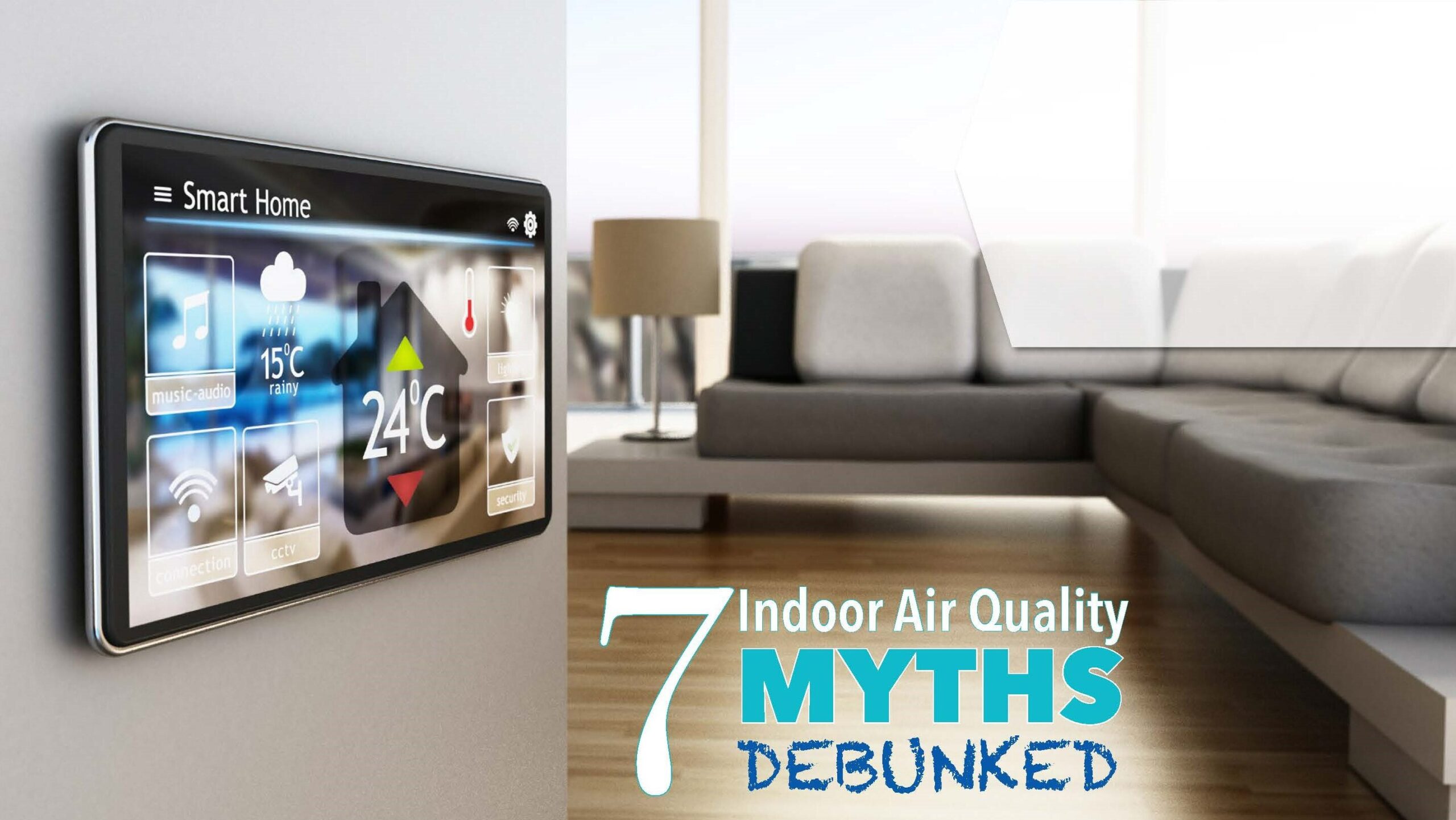
7 Indoor Air Quality Myths Debunked
Air quality has become a hot topic. COVID-19 heightened our awareness of all of our surroundings – especially the air we breathe. Because people spend 90% of their time indoors, especially during colder winter months, sorting fact from fiction about indoor air quality is crucial.
Below are some common myths about indoor air quality and tips to improve the air you breathe:
Myth 1: Outside air is always better.
Debunked: Not always. It’s healthy to get a dose of fresh air, but sometimes when you bring in outdoor air you can invite allergens, smog and humidity into your home. It can be better to filter your air to freshen and reduce particulates. According to Jason Bingham, president of Trane Technologies’ Residential HVAC business, “An important aspect of helping people feel confident indoors is mitigating airborne health risks, especially those related to viruses, bacteria, pet dander and other particles.”
Myth 2: Using technology to monitor indoor air quality will increase energy consumption.
Debunked: Not necessarily. Efficient and connected building technologies make it easier for experts to help builders install eco-friendly, economical heating and cooling solutions. Meanwhile, homeowners and building owners can use air quality monitors, which can detect certain potentially harmful gases and particulates, to make cost-effective, efficient decisions about improving air quality.
Myth 3: Once the pandemic is over, indoor air quality won’t be a concern.
Debunked: Indoor air quality will always be important. Without adequate ventilation, harmful gases or particles can infiltrate the air. By reducing these irritants and pollutants, you can also reduce exposure to pathogens and conditions that can cause illnesses, respiratory problems and other health risks. Plus, less illness means less absenteeism from work or school. Improved air quality in homes and buildings can pay dividends for years.
Myth 4: Vaccinated people don’t need to worry about the air quality.
Debunked: Vaccination is a protection against specific viruses, but not all. Without proper ventilation, filtration and humidity control, there is a higher risk of contaminants circulating indoors and conditions that can encourage exposure to airborne viruses. Gases, particulate matter and other pollutants can also affect your health, especially if you have asthma or allergies.
Myth 5: You can’t see air quality so you can’t feel confident about the air you breathe.
Debunked: Sophisticated sensors and technologies are available that help you know and control air quality. According to the experts, the only way to improve your air quality is to understand its importance and the various factors that impact it, such as ventilation and humidity.
Myth 6: If room temperature is right, I should be OK and feel comfortable.
Debunked: Humidity plays a big part in air quality and comfort: too high or too low can cause health problems, discomfort, mildew and unhygienic air. Indoor spaces that are the right temperature but don’t have adequate ventilation can contain high concentrations of carbon dioxide, which can lead to drowsiness and headaches.
Myth 7: Thermal comfort (how we feel) has nothing to do with air quality.
Debunked: Thermal comfort is based on temperature and humidity, and humidity plays a significant role in air quality. For example, airborne transmission of the SARS-CoV-2 virus is found to be more transmissible in dry air. As a result, researchers recommend relative humidity of 30% to 50%.
Busting these myths is just the tip of the air quality iceberg. Proper maintenance is important. Ensure your vacuum cleaner, AC unit, range hood and other ventilation equipment are working properly. Clean or replace furnace filters at recommended intervals.
Janssen’s can also help improve your indoor air quality with regularly scheduled professional carpet and upholstery cleaning. Call us today to set up your clean and healthy maintenance program.
